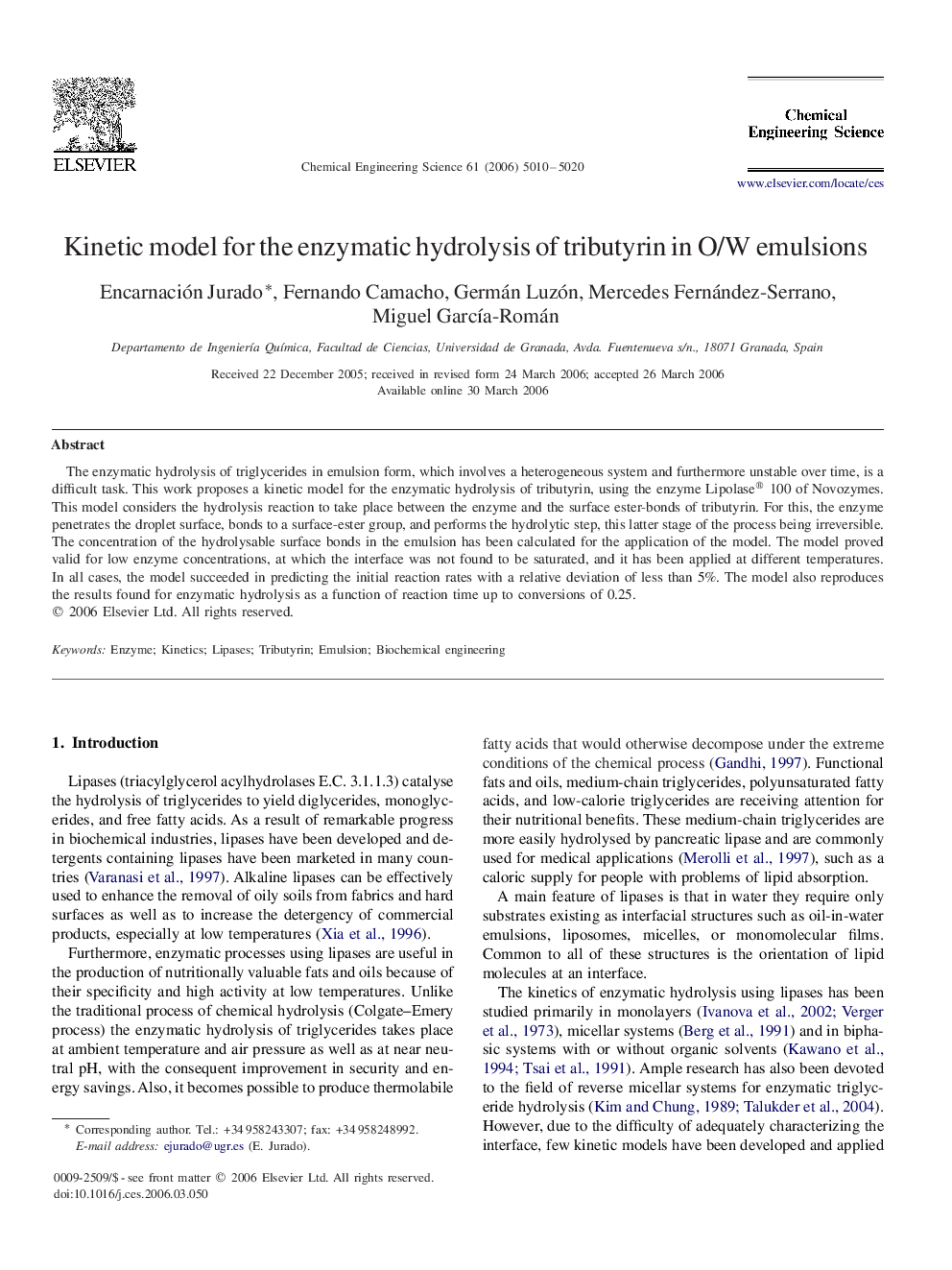| Article ID | Journal | Published Year | Pages | File Type |
|---|---|---|---|---|
| 160640 | Chemical Engineering Science | 2006 | 11 Pages |
The enzymatic hydrolysis of triglycerides in emulsion form, which involves a heterogeneous system and furthermore unstable over time, is a difficult task. This work proposes a kinetic model for the enzymatic hydrolysis of tributyrin, using the enzyme Lipolase®Lipolase® 100 of Novozymes. This model considers the hydrolysis reaction to take place between the enzyme and the surface ester-bonds of tributyrin. For this, the enzyme penetrates the droplet surface, bonds to a surface-ester group, and performs the hydrolytic step, this latter stage of the process being irreversible. The concentration of the hydrolysable surface bonds in the emulsion has been calculated for the application of the model. The model proved valid for low enzyme concentrations, at which the interface was not found to be saturated, and it has been applied at different temperatures. In all cases, the model succeeded in predicting the initial reaction rates with a relative deviation of less than 5%. The model also reproduces the results found for enzymatic hydrolysis as a function of reaction time up to conversions of 0.25.
